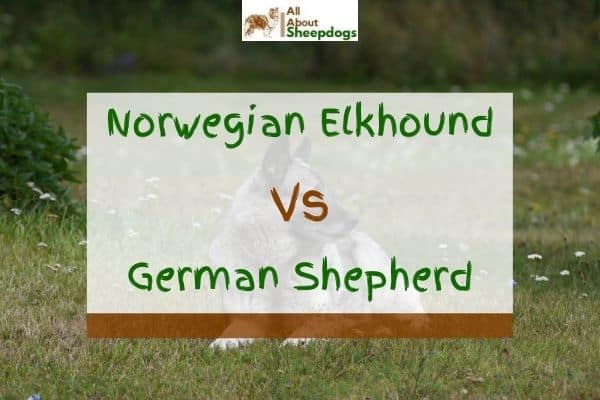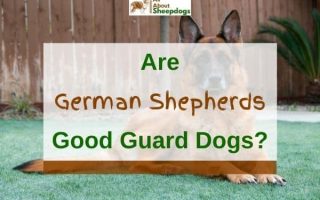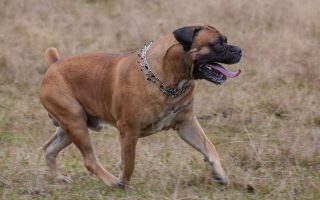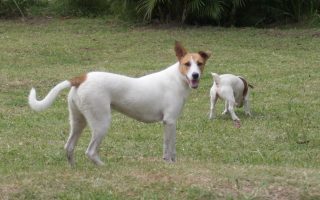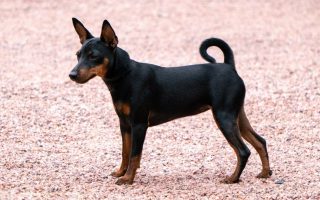Norwegian Elkhound Vs German Shepherd! What a match!
If you are looking forward to adopting a personality endowed dog and you can’t seem to solve the dilemma of choosing between the Norwegian Elkhound and the German Shepherd, then ease your mind as I got you covered through this article.
I will be providing you with the history, physical appearance, life span, health conditions, nutritional requirements, grooming needs, and the temperaments of these 2 easy to love dogs.
I will also walk you through a complete summary of the differences between these 2 dog breeds, of which I am optimistic will help you choose between one of them.
| Attributes | Norwegian Elkhound | German Shepherd |
| Good For First Time Owners | Yes | Yes |
| Good Guard Dog | To Some Degree | Yes |
| Apartment Friendly | No | Yes |
| Good Family Dog | With Training | With Training |
| Shedding | Moderate | High |
| Barking And Howling | High | Moderate To High |
| Height | 19.5-20.5 inches (50-52 cm) | 22-26 inches (55-65 cm) |
| Average Life Expectancy | 12-15 Years | 9-13 Years |
[wpsm_toplist]
Norwegian Elkhound – Dog Breed Information
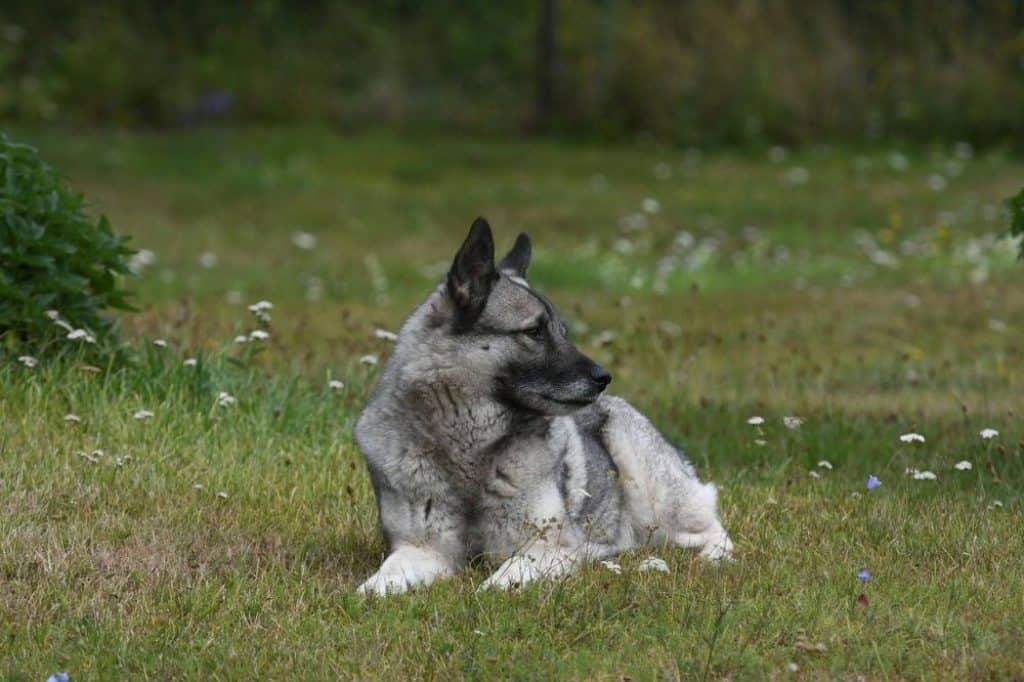
It was previously known as Dyrehund (translates to ‘animal dog’ in the Norwegian native dialect) in medieval times.
Presently it’s also known as the Norwegian Moose dog and the Norsk Elghund Gray.
History
Being the National dog of Norway, it’s a bit apparent that the Norwegian Elkhound originated in Norway.
Archaeological skeletal findings of this workaholic breed show that it was already in existence around 4000-5000 BC.
This dog breed was bred to work as a herder, a guardian, and a hunting dog.
The American Kennel Club recognized this dog officially in 1913.
Physical Appearance
This medium-sized working dog breed can grow to a height of 19.5-20.5 inches and weigh around 40-60 pounds (18-27 kgs) as an adult.
Its thick water-resistant double coat comes in shades of black and white, grey or silver.
It has a broad and wedge-shaped head, tapered muzzle, oval-shaped eyes which are typically dark brown, pointed ears, and a squarely built compact body.
Nutritional Requirements
Remember that your dog’s general health is directly influenced by its diet.
Consider feeding your hound with vet-approved dry high-quality dog food at least 2 times in an adult Elkhound and 3-4 times in growing puppies.
Extra tip; Your dog’s daily treat shouldn’t make up more than 10% of your dog’s daily diet.
Note your dog’s activity level and size will also determine the quantity of food to feed your Norwegian Elkhound.
Lifespan And Health Conditions
This dog breed has a life expectancy of 12-15 years.
Providing it with the proper nutritional requirements and ensuring that you physically stimulate this dog will definitely add a year or 2 to its life expectancy.
Some of the health conditions that this generally healthy dog breed is predisposed to include; Hip dysplasia, progressive retinal atrophy, and a renal condition known as the Fanconi Syndrome.
Grooming
A monthly bath is all your Norwegian Elkhound will require to stay smelling fresh and clean.
Ensure that you thoroughly dry it after bathing it using a dog-safe hairdryer.
Consider brushing your hound’s coat at least 2 times a week. Always use a safe doggy comb to brush its hair and to avoid damaging its skin.
You can also maintain your Elkhound’s oral hygiene by brushing its teeth 2 times a week for around 2-5 minutes.
Pro-tip; If your hound isn’t receptive to having a toothbrush placed in its teeth, consider using a clean cloth or teeth wipe.
Ensure that your dog is calm before brushing its teeth. Please don’t force it to cooperate!
Lest you want to get a feisty bite
Temperament
The Norwegian Elkhound is the epitome of agility and hardiness.
They are also a favorite among dog owners due to their energetic, affectionate, boldness, playful, alert, and pet and kid-friendly temperament.
However, these dogs can sometimes become strong-willed if not properly trained in obedience commands at a young age.
Pro-tip; To avoid having a Stubborn Norwegian Elkhound around, ensure that you adopt an Alpha mentality and let your dog know who the boss is.
Also, try and keep your dog busy by engaging it in physical stimulations that help it burn off its extra energy.
German Shepherd – Dog Breed Information
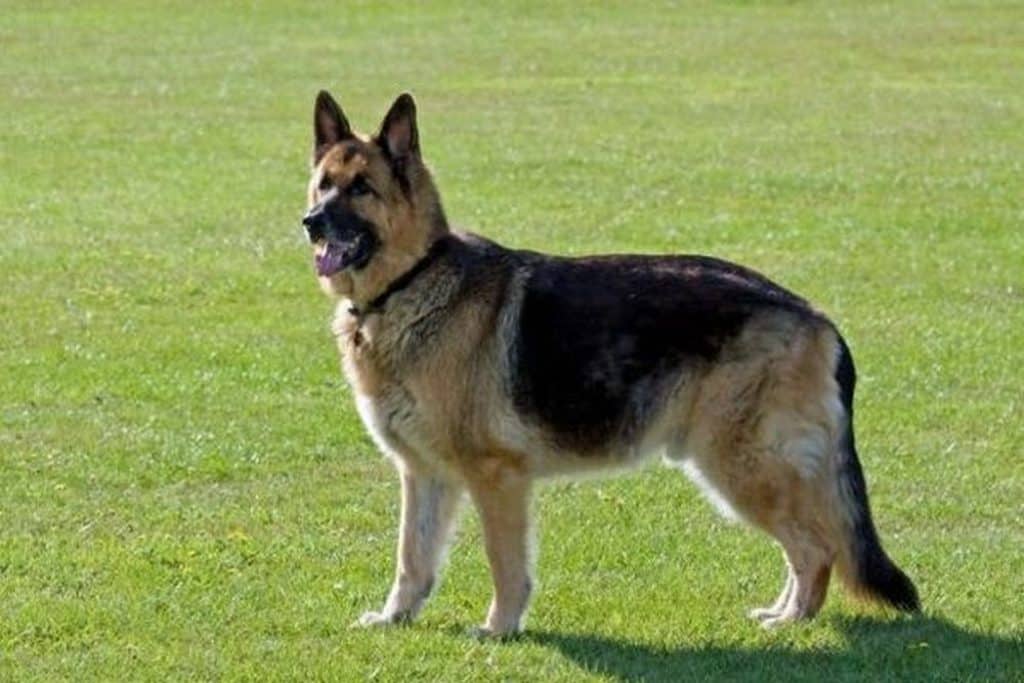
Also known as GSD.
History
This working dog breed originated in Germany in the late 1800s.
It was bred to herd sheep.
This breed is believed to have first emerged in the USA in 1906 and was later officially recognized by the American Kennel Club in 1908.
Queen of Switzerland was the name given to the first GSD to be registered in the USA.
Physical Appearance
These bold dogs can grow to a height of 22-26 inches and weigh around 50-90 pounds (23-41 kg) as adults.
Their water proof double coats can be black, grey, black and tan, black and silver, red and black, or sable in color.
This dog breed has a broad head, a sharp tapering muzzle, almond-shaped eyes, commonly brown and rarely blue, and pointed ears that are usually floppy when the GSD is still a pup.
All these physical attributes give the German Shepherd a keen and intimidating look.
Nutritional Requirements
NOTE! The type of diet you feed your dog greatly determines its skin integrity and shedding potential. German Shepherds thrive in diets rich in high-quality proteins and fats.
Foods rich in fiber and vitamins are also recommended for growing and adult GSD.
Consider feeding your hound at least twice a day if it’s an adult and 3-4 times in a day if it’s a growing pup (1-2 years) with beef, white meat (chicken and turkey), sea meat(tuna and salmon), eggs, and rice.
You can also feed your German Shepherd with apples, bananas, and berries, for fruits.
NEVER feed your dog grapes or raisins.
Lifespan And Health Conditions
These hounds have a lifespan of 9-13 years, with the females outliving the males.
Canine Diabetes, Epilepsy, Elbow Dysplasia, Gastric dilatation-volvulus (distention of a dog’s stomach due to excessive gas buildup), Hip dysplasia, and Hemophilia are some of the conditions known to reduce the life longevity and quality of these dogs.
Grooming
It’s important that you brush your GSD coat at least once a day for around 5-15 minutes.
Pro-tip; Always use a dog brush that has rounded tips, which are firm and long enough to penetrate the undercoat of your hound without irritating its skin.
Bathing your GSD by using a dog-safe shampoo once in every 2-3 months is recommended.
Remember to trim its nails up to 2mm away from its quick (the epithelium located beneath your GSD’s nail bed) after every 2 weeks.
Temperament
Despite their fierce looks, a well trained GSD is nonaggressive and will only attack an individual or another animal when intensely provoked.
These hounds are also known to be incredibly loyal, confident, decisive, alert, bold, intelligent, adventurous, and very obedient.
German Shepherd dogs can be quite strong-willed and aggressive, especially when not adequately socialized or trained in obedience commands at a young age.
Norwegian Elkhound Vs German Shepherd – What’s The Difference?
| Norwegian Elkhound | German Shepherd |
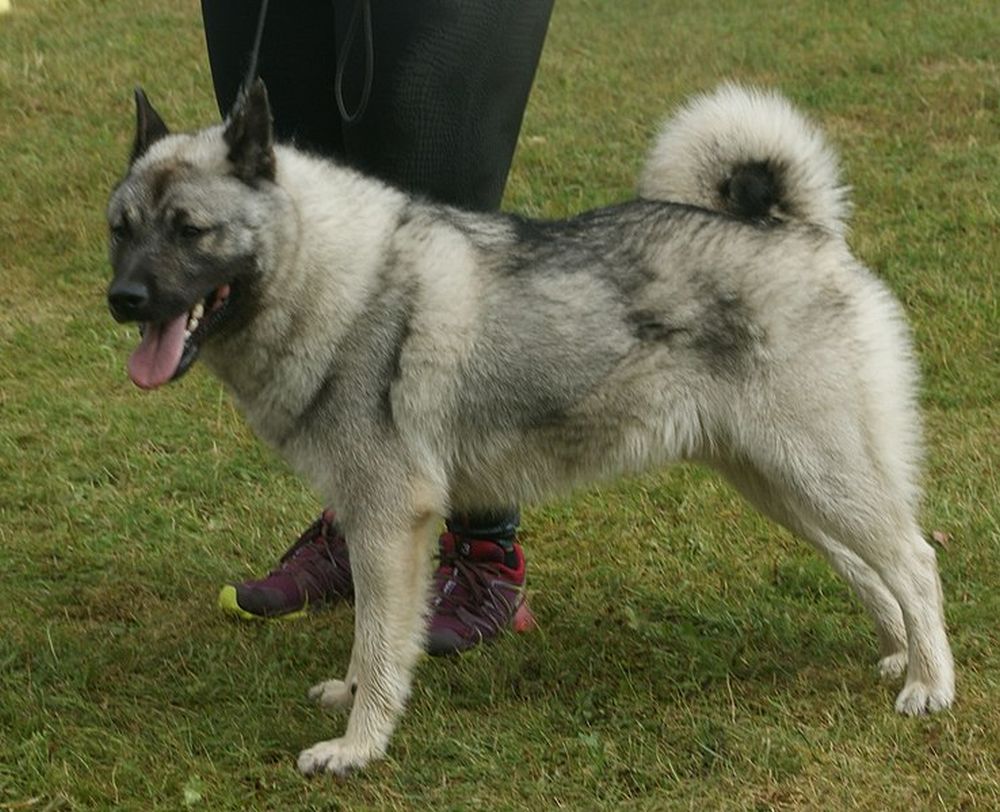 | 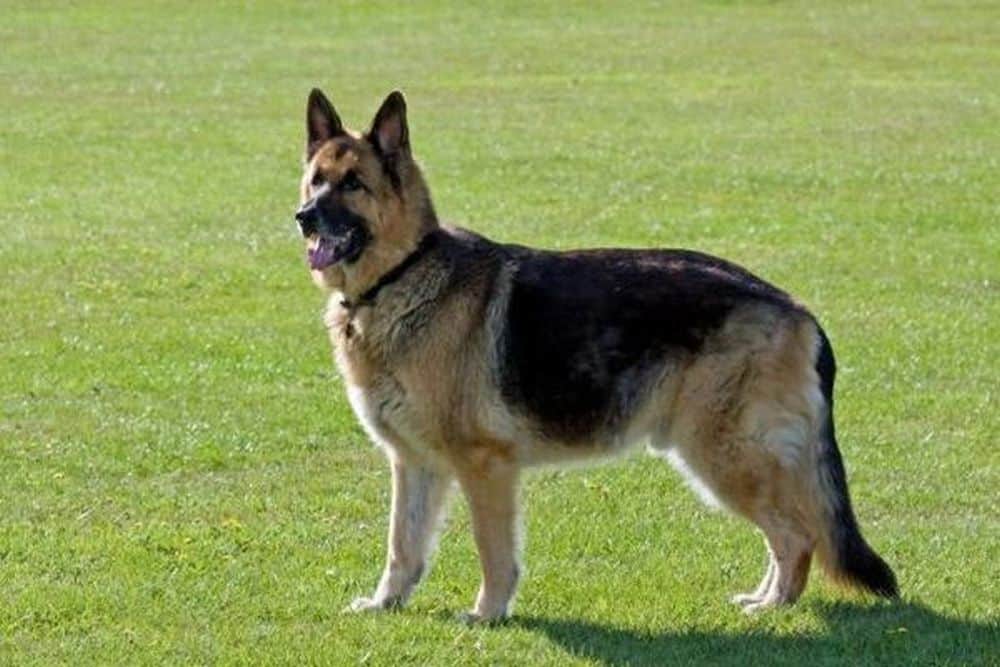 |
Country Of Origin And Year Of Origin
The Black Elkhound has its origin traced back to Norway around 4000 BC- 5000 BC, whereas the German Shepherd dog has its origins traced back to Germany around the late 1800s.
This makes the Norwegian Elkhound the oldest dog breed among the 2.
Size
The Norwegian Elkhound’s height is 19-20.5 inches, and its weight is 40-60 pounds, whereas the German Shepherd’s height is 22-26 inches and weighs around 50-90 pounds.
This means the German Shepherd outdo the Norwegian Elkhound in both weight and height.
Lifespan
The Norwegian Elkhound has a lifespan of 12-15 years, whereas the GSD has a lifespan of 9-13 years.
This means that the Elkhound has a longer life expectancy.
Health Conditions
Despite the GSD being a relatively healthy dog, it’s predisposed more to both acquired and hereditary health conditions when compared to the Norwegian Elkhounds.
Living Environment And Space
GSD can adapt to living in an apartment, indoors, or in small or medium back yards, whereas the Elkhound can ONLY live in a home that has a large backyard.
This makes the GSD suitable for city dwellers and the Elkhound for country dwellers.
Temperature Tolerance
The Norwegian Elkhound can tolerate temperatures of 21°F to 70°F (-6°C to 21°C), whereas the German Shepherd dog can tolerate temperatures of 39°F to 84°F (4°C to 29°C).
This makes the Norwegian Elkhound suitable for living in cold climates, whereas the GSDis are more suitable for living in a bit warmer climates.
Shedding Potential
German Shepherds are quite heavy shedders when compared to Norwegians Elkhounds.
This makes the Norwegian Elkhounds a good fit for dog lovers who are allergic to dog dander.
Independent Nature
German Shepherd dogs are more independent than the Norwegian Elkhounds.
Drooling Tendency
German Shepherds have a medium drooling tendency, whereas the Norwegians Elkhounds have a very low drooling tendency.
Grooming Needs
Norwegian Elkhounds require more grooming needs and time when compared to the German Shepherd dog breed.
Norwegian Elkhound Vs German Shepherd – Which one is better?
Both the Norwegian Elkhound and the GSD make an excellent watch, guard, or family dog when adequately trained at a young age.
The Norwegian Elkhound Vs German Shepherd are very vocal dogs; they can both bark and howl very loudly.
They are also good for both first-time and experienced dog owners, and are both pet and kid-friendly provided they are socialized at a young age.
However, I would recommend adopting a Norwegian Elkhound if you are a first-time dog owner as they are not demanding when compared to GSD.
German Shepherd dogs are bigger and tend to drool and shed more than the Norwegian Elkhounds.
The GSD can comfortably adapt to living in apartments or homes with a small backyard, unlike the Norwegian Elkhound, who can only live in a home that has a large backyard.
This makes the GDS a good fit for city dwellers and Norwegian Elkhound a good fit for a city dweller.
Despite both breeds being relatively healthy, the GSD is somewhat more predisposed to both acquired and inherited medical conditions when compared to the Norwegian Elkhounds.
The Norwegian Elkhounds have a longer life expectancy when compared to the GSD.
Remember only to adopt a hound that complements your personality and that which you can comfortably take care of without neglecting its needs.

